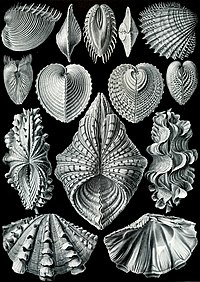
Photo from wikipedia
Settling particulate matter (SPM) samples were collected monthly during a 21-month-long (April 2014 to December 2015) monitoring program from a fish cage and a large seaweed (Gracilaria lemaneiformis) cultivation in… Click to show full abstract
Settling particulate matter (SPM) samples were collected monthly during a 21-month-long (April 2014 to December 2015) monitoring program from a fish cage and a large seaweed (Gracilaria lemaneiformis) cultivation in a typical mariculture base in eastern coast of Guangdong Province, South China. The concentrations of eight heavy metals (Pb, Cr, Ni, Cu, Zn, Co, V and Mn) showed a clear seasonality with relatively higher levels in the rainy season for most metals. In addition, five metals (Pb, Cr, Ni, Cu and Zn) showed slightly higher concentrations in the fish cage than in the large seaweed cultivation. A principal component analysis (PCA) further revealed that Ni, Cu and Zn were influenced by human activities, whereas the rest of the metals mainly by a combination of natural and anthropogenic factors. SPM in the two different mariculture areas had a 21% probability of toxicity based on the mean effects range-median quotient.
Journal Title: Marine pollution bulletin
Year Published: 2017
Link to full text (if available)
Share on Social Media: Sign Up to like & get
recommendations!